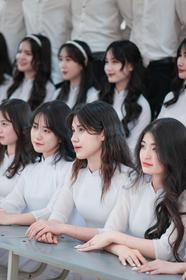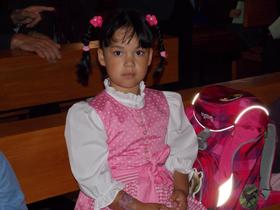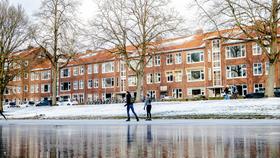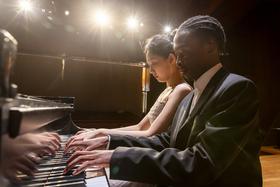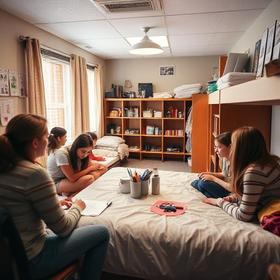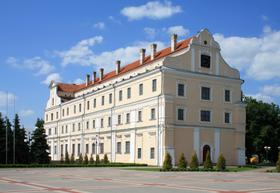My apologies to Shakespeare! Whether a school uses the Harkness Table™ or doesn't use the Harkness Table™ is a matter of teaching style worth exploring in some detail. That is what you and I shall do in this little essay.
What's a Harkness Table™? It is a table, depending on how you look at it. Some would say it is a method. We will look at Harkness™ from all angles so that you can understand it and decide whether sending your child to a school that uses Harkness Tables™ is something you value.
Background/History
First, the Harkness Table™ gets its name from a wealthy philanthropist, Edward Harkness. He graduated from historic Saint Paul's School in Concord, New Hampshire. In 1930, he gave $5,840,000 (approximately $60,000,000 in 2015 dollars) to Phillips Exeter Academy with the stated purpose, among other things, of changing the way students were taught. About one third of Edward Harkness' gift was used for the tables and necessary alterations to the classrooms in which they were installed. The rest was used for a host of other projects at Exeter, including adding new teachers and halving the class size.
In Harkness' own words: “What I have in mind is (a classroom) where (students) could sit around a table with a teacher who would talk with them, and instruct them by a sort of tutorial or conference method, where (each student) would feel encouraged to speak up. This would be a real revolution in methods.”
Interestingly enough, the modern Harkness Tables™ are oval. But the first prototypes were round. What's the difference? A round table does not allow the teacher to make eye contact with all his students. An oval design allows that all-important eye contact. Seeing your students' eyes is a critical part of teaching. It's one of the reasons I am not wild about online teaching. But we'll save that discussion for another day.
The basic idea behind the Harkness Table™ is to have 12 students seated around the table with their teacher instead of having 12 students seated at desks facing a teacher at the front of the classroom. A Harkness Table™ facilitates discussion. It compels every student to be part of the discussion. It encourages collaboration.
Back in 1930, Edward Harkness's concept of teaching this way was pretty revolutionary, indeed progressive. It was rarely used in secondary education as. Indeed, it was rarely used in colleges and universities of the time. Today, it is a widely accepted, though hardly universal, teaching method.
How the Harkness Table™ works
The Stevenson School in Carmel, California, puts it succinctly:
"The Harkness™ philosophy is a form of collaborative learning that doesn’t involve lectures.
Teachers and students come prepared to discuss, share, and discover relevant classroom content with one another.
The oval design of a Harkness Table™ allows everyone seated to see everyone else's eyes at the table, meaning no student is left out of the discussion."
Brian Mulgardt describes his experiences teaching with the Harkness Method™ of teaching for the first time in an essay entitled Introducing and Using the Discussion (AKA, Harkness) Table:
"International affairs expert Fareed Zakaria has recently suggested that America’s edge in education comes from its habit of making students think rather than just memorize and regurgitate (191-195). Discussion based teaching (also called the “Harkness method,” after the oval discussion tables designed to facilitate conversation) challenges students to sit at the center of education, making meaning of new information together, talking, listening, and ultimately thinking. While some schools have relied on the method for many years, others, like mine, have not. In such cases, introducing this style of learning, in which no student can hide, can be difficult if students aren’t used to it, and making sure it’s productive also presents challenges. However, once included in a curriculum it allows students to more deeply understand material and think for themselves."
Educating with the Harkness Table™...Dr. Tyler Tingley
"Harkness Tables™ are oval and seat a dozen students and a teacher, but they are much more than places to sit. Classmates learn by discussing their thoughts and ideas rather than just by taking notes. Teachers participate in discussions and guide students without lecturing."
And I will add my own personal experience. When I taught English and history at a private school in Nassau, Bahamas, I organized my class of 12 around two 12-foot tables. It was no Harkness table, but it was the next best thing. My idea from the outset was to facilitate discussion and critical thinking and encourage every student to participate in the process. Having been a choirmaster in the Episcopal church most of my life, I was accustomed to having eye contact with my choristers. We made the best music when everybody watched me, and I watched every singer. I found the same principle worked in the classroom even though back in 1994, I had never heard of the Harkness Table™. If I were teaching today, I could not imagine myself teaching any other way.
This video explains how the Harkness Table works.
Advantages
How many schools in the United States and Canada use Harkness Tables™? Over 200 schools use Harkness tables in their classrooms, according to the licensed manufacturer of Harkness Tables™.
Add finding out how the schools that you are looking at actually teach. When you visit schools on your shortlist, ask to see some classrooms. Did you see traditional desks in rows or a Harkness Table™? Both are pretty hard to hide. So, whatever is being used will be on full display. I am not suggesting that you cannot teach collaboratively and facilitate discussion in a classroom with traditional desks. It can be done with a class size of 12-14 students. In my opinion, It is not as effective as teaching at a Harkness Table™.
Who manufactures and sells Harkness tables?
Phillips Exeter Academy has registered Harkness ™, Harkness Method™, and Harkness Table™ as trademarks. Hence, you will see tables essentially similar to the Exeter Harkness Table™ styled as Collaborative Learning Tables to avoid violating the trademark protection Exeter has in place. To order a genuine Harkness Table™, you will do so through the exclusive manufacturer, D.R. Dimes & Company. Collaborative learning tables are available from a small number of manufacturers. A competent furniture maker could make a collaborative learning table. It just could not be called a Harkness Table™per se.
In conclusion, remember that Harkness™ is more than a piece of classroom furniture. It is an approach to teaching and learning. You need the furniture and the method to make things work as Edward Harkness intended.
Questions? Contact us on Facebook. @boardingschoolreview


